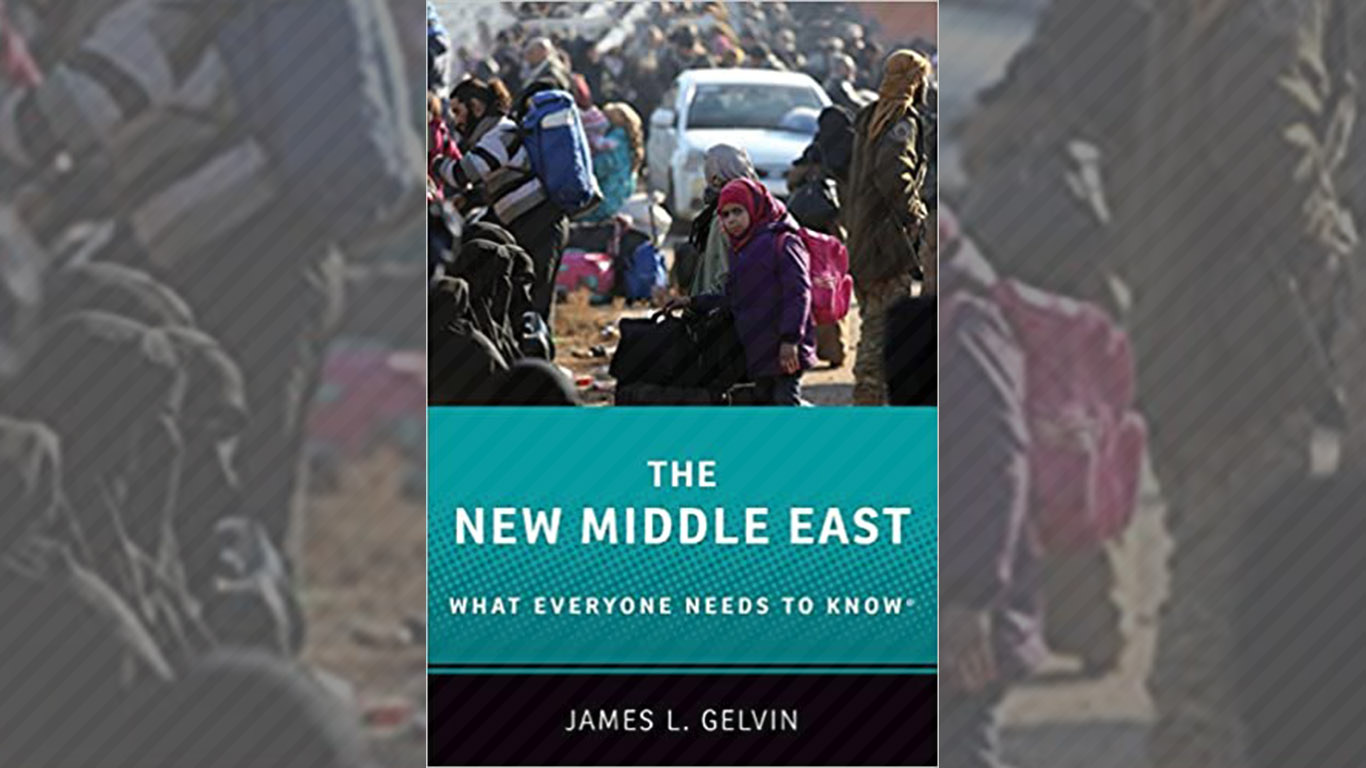James Gelvin, The Middle East: What Everyone Needs to Know
The Arab uprisings have transformed the nature of politics, source of political legitimacy, forms of political violence and the international politics of the region. One can justifiably describe it as one of the watershed moments in the region’s modern history, with the term ‘post-Arab Spring’ already being applied by scholars and practitioners to define the unprecedented events taking place in the entire region. In ‘The New Middle East: What Everyone Needs to Know’, James Gelvin aims to shed light on events such as Syrian Civil War or the rise and fall of ISIS (Islamic State of Iraq and Syria) to identify the changing characteristics of the ‘new’ Middle East.
“The New Middle East” consists of six chapters. In the first chapter, the author presents a short history of the Middle East from 1945 to 2011 and gives brief explanations about various topics such as demography, state system, political life, the roots of authoritarianism, great power involvement and the oil politics in the Middle East. The second chapter deals with the underlying structural factors that paved the way for the uprisings in the Arab world. Although he focuses on the historical structural factors, he does not miss the significance and influence of the specific agents. The author divides the uprisings into five clusters. According to this classification, Tunisia and Egypt constitute one cluster where the unified military rose to the occasion and deposed decades-long autocrats, unlike Yemen and Libya which Gelvin calls ‘weak states’ (p.40). Syria and Bahrain constitute a third cluster where the regimes’ resilience is derived from their dependence on particular societal identities with the regime itself organised as a family business (p.41-42). However, in the monarchies of the region and hybrid systems such as Palestine, Iraq and Lebanon, the regimes did not face a large scale challenge even if protests did take place on certain levels (p.43-46). In the third chapter, the author discusses the civil war in Syria by presenting a map of the current situation in the country, clearly depicting the belligerents on the ground and their international supporters. In the fourth chapter, the author elaborates on the rise and fall of ISIS by asking crucial questions such as ‘Who joins ISIS?’ and ‘What does ISIS believe?.’ The fifth chapter discusses patrons and proxies, especially with regard to the American positions on the regional developments. The last chapter focuses on several dimensions of human security: demography and urbanization, poverty, climate change, the status of women and education.
In search of imparting meaning to the ongoing developments, the author asks sixty-six direct questions in six chapters throughout the entire book. Designing a book in a question-and-answer format is not unusual, but the author here formulates his questions by touching upon the subsequent and interrelated developments that took place after the outbreak of the Arab uprisings in a harmonious and consistent manner. This helps the reader engage in each question separately, yet at the same time comprehend how all these questions provide a macro level discussion of the Middle East.
However, although the questions asked are timely, the author’s choice to provide short answers makes the book’s level of analysis somewhat superficial. This turns the book’s main strength (comprehending the contemporary history of the Middle East) into its main weakness. For example, the question of whether ISIS is Islamic (p.90) does not get the detailed discussion that it deserves to be properly understood. Additionally, the book’s ultimate aim — explaining an existing reality — becomes more difficult to achieve because the Arab uprisings still continue unabated and while some actors disappear, new ones emerge and others merge.
Gelvin only partially explains the roots of the term ‘the new Middle East’ he employs throughout the book. In 2006, Condolezza Rice described the Israel- Hezbollah war as the ‘birth pangs of a new Middle East’ (p.21) with the expectation of Hezbollah’s defeat and the emergence of a more democratic region. While Gelvin borrows this term he uses it in a different manner. For him, the war heralded a new Middle East, but one that was more violent and unpredictable than its predecessor. He does not consider the Israel- Hezbollah war to have made the new Middle East, rather he tends to see it as the early signs of the rise of non-state armed groups and violence in the region. However, the term ‘the new Middle East’ is not free from criticism: what is really ‘new’ in the Middle East is not clear in the book and since the book has no introduction or conclusion chapters, Gelvin lacked room to fully engage in the ‘new Middle East’ debate. Therefore, the term loses its ability to be analytically useful as new realities continue to emerge and the grounds of this novelty continue to be challenged. Although the book was published in 2018, it is not clear to what extent this description can help us understand some substantial developments which took place after the book’s publication, such as the impacts of the Trump administration, especially on Israel-Palestine conflict or the Arab-Israeli normalization in a broader context, or the detrimental effects of the Covid-19 pandemic.
Overall, one of the strengths of the book is its comprehensive scope that takes into consideration various aspects and facets of Middle East social and political life which are rarely taken together. It is an introductory book and an easy read. Its successful use of a question and answer style without losing sight of the general context and cohesiveness may also invite further manuscripts to use the same method. For this reason, its main audience is not only academics or students in Middle Eastern studies, but also a wider audience of anyone interested in current developments in the region.

